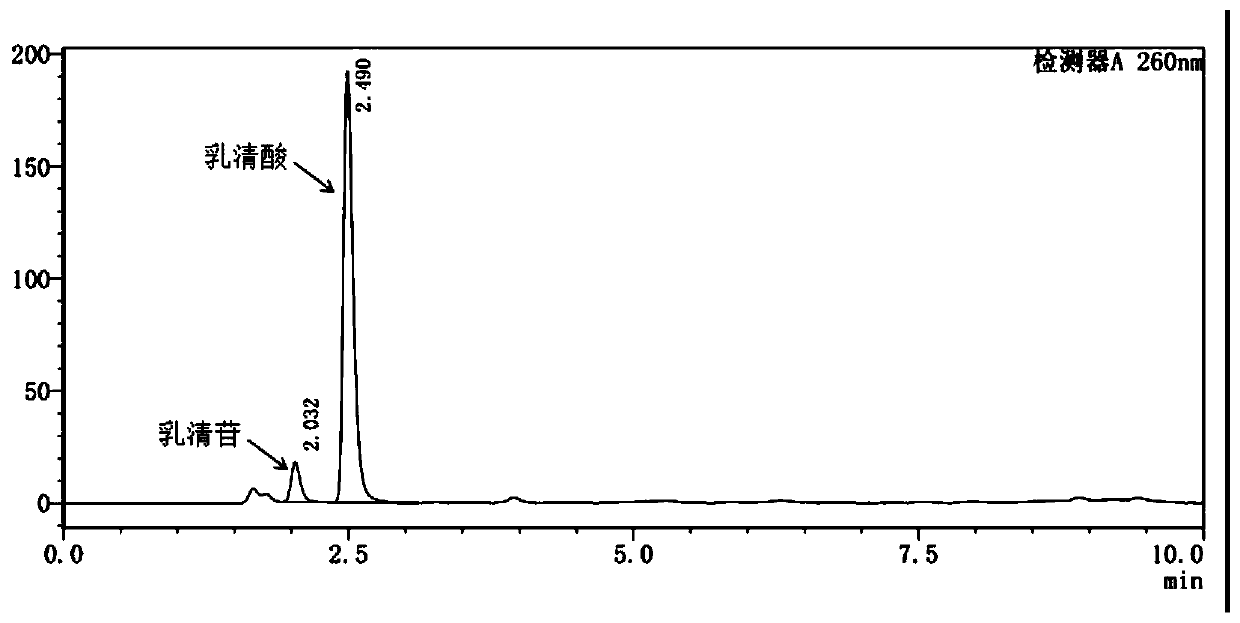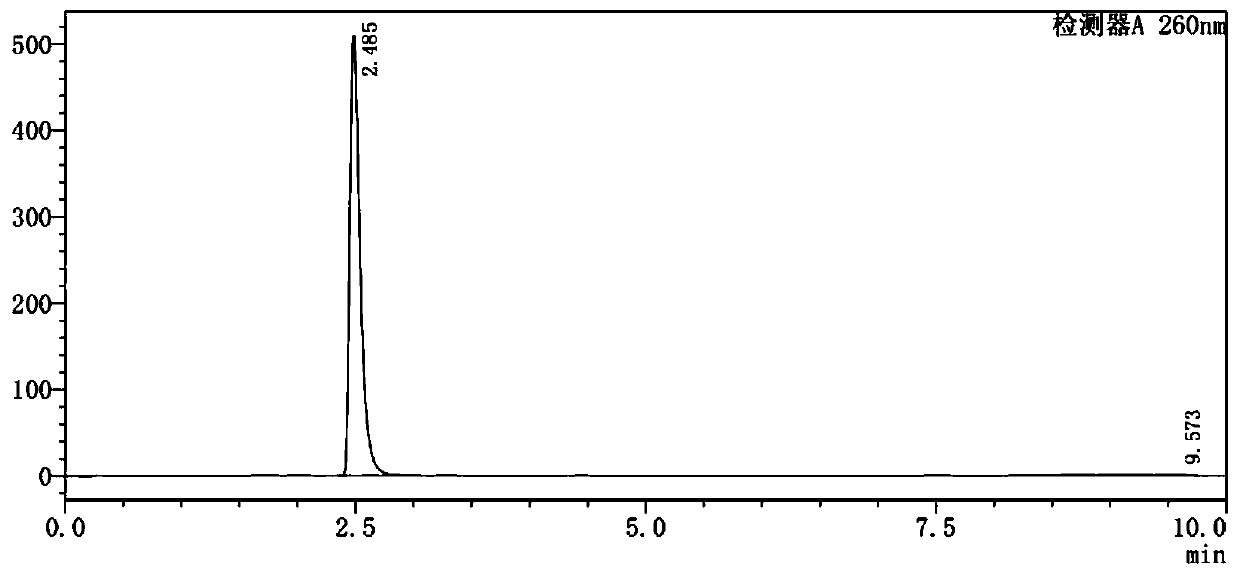Recombinant microorganisms for producing orotic acid and method thereof
A technology of recombinant microorganisms and orotic acid, applied in the biological field, can solve the problems of complex process conditions, high cost, low yield and the like
- Summary
- Abstract
- Description
- Claims
- Application Information
AI Technical Summary
Problems solved by technology
Method used
Image
Examples
Embodiment 1
[0019] Example 1 The method for gene knockout in Escherichia coli
[0020] The present invention adopts Datsenko's method to carry out gene knockout in Escherichia coli (Datsenko 2000.ProcNatl Acad Sci USA, 97 (12): 6640-6645), corresponding gene knockout primer sees Baba 2006.Mol SystBiol, 2 (1) 0008.
Embodiment 2
[0021] Embodiment 2 shaking flask fermentation verifies the method for recombinant bacterial strain
[0022] The fermentation medium for verifying that the recombinant strain produces orotic acid in shake flask fermentation is specifically 100ml of YC solution per liter of medium, 200ml of 5 times salt solution, 1ml of TM2 solution, 10mg of iron citrate, 120mg of anhydrous magnesium sulfate, Calcium chloride 111mg, thiamine 1ug, constant volume with deionized water, wherein YC solution is glycerin 2g, peptone 0.6g, yeast powder 0.2g, deionized water 100ml; 5 times the salt solution contains 30g of disodium hydrogen phosphate, Potassium dihydrogen phosphate 15g, sodium chloride 2.5g, ammonium chloride 5.0g, dilute to 1L with deionized water; TM2 solution is zinc chloride tetrahydrate 2.0g, calcium chloride hexahydrate 2.0g, molybdic acid dihydrate Sodium 2.0g, copper sulfate pentahydrate 1.9g, boric acid 0.5g, hydrochloric acid 100ml, dilute to 1L with ionized water. The above...
Embodiment 35
[0024] Embodiment 35L fermenter verifies the method that recombinant bacterial strain produces orotic acid
[0025] Verification of the fermentation medium for the production of orotic acid by fermentation of the recombinant strain in the fermenter, specifically containing 10 g of ammonium sulfate, 10 g of sodium chloride, 5 g of potassium dihydrogen phosphate, 1 g of magnesium sulfate heptahydrate, 50 g of glucose, and chlorine Calcium chloride 105mg, zinc chloride 10mg, TM3 trace element solution 1mL, ferric citrate 94mg, yeast extract 5g, corn steep liquor 20g, cytidine 0.04g, dilute to volume with deionized water. The TM3 trace element solution is zinc chloride 1.31g, calcium chloride 1.01g, ammonium molybdate tetrahydrate 1.18g, copper sulfate 3.9g, manganese sulfate monohydrate 7.5g hydrochloric acid 10mL, and deionized water to volume. The feed medium contained 500 g of glucose per liter.
[0026] The fermentation process is as follows: first prepare the seeds, pick a ...
PUM
| Property | Measurement | Unit |
|---|---|---|
| melting point | aaaaa | aaaaa |
Abstract
Description
Claims
Application Information
 Login to View More
Login to View More - R&D
- Intellectual Property
- Life Sciences
- Materials
- Tech Scout
- Unparalleled Data Quality
- Higher Quality Content
- 60% Fewer Hallucinations
Browse by: Latest US Patents, China's latest patents, Technical Efficacy Thesaurus, Application Domain, Technology Topic, Popular Technical Reports.
© 2025 PatSnap. All rights reserved.Legal|Privacy policy|Modern Slavery Act Transparency Statement|Sitemap|About US| Contact US: help@patsnap.com



